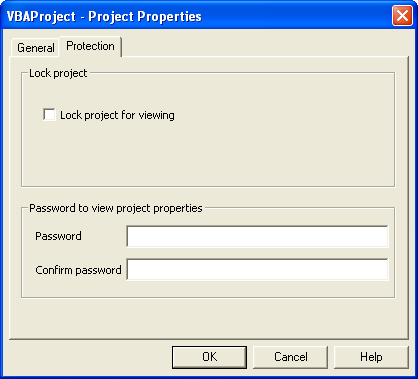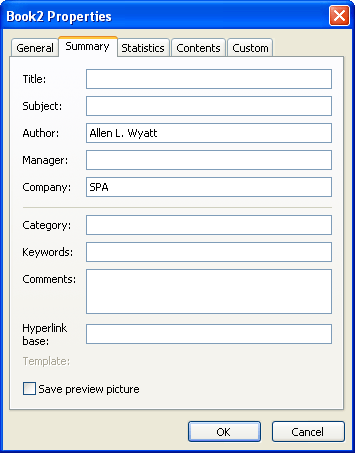Please Note: This article is written for users of the following Microsoft Excel versions: 97, 2000, 2002, and 2003. If you are using a later version (Excel 2007 or later), this tip may not work for you. For a version of this tip written specifically for later versions of Excel, click here: Creating Add-Ins.
Written by Allen Wyatt (last updated September 30, 2023)
This tip applies to Excel 97, 2000, 2002, and 2003
Any Excel workbook can be converted to an add-in. The steps you need to follow to create an add-in are very precise, and may seem a bit overwhelming (particularly the first couple of times you do it). To create a protected add-in file, follow these steps:

Figure 1. The Protection tab of the project's Properties dialog box.

Figure 2. The Summary tab of the workbook's Properties dialog box.
Note:
ExcelTips is your source for cost-effective Microsoft Excel training. This tip (2927) applies to Microsoft Excel 97, 2000, 2002, and 2003. You can find a version of this tip for the ribbon interface of Excel (Excel 2007 and later) here: Creating Add-Ins.

Excel Smarts for Beginners! Featuring the friendly and trusted For Dummies style, this popular guide shows beginners how to get up and running with Excel while also helping more experienced users get comfortable with the newest features. Check out Excel 2013 For Dummies today!
You may need to automatically generate unique numbers when you create new worksheets in a workbook. Here's a couple of ...
Discover MoreDo you have a macro that need to read and write files? If so, then there is a good chance you need to specify the default ...
Discover MoreIf you have a macro that takes a long time to process a workbook, you might want to continue working in Excel while the ...
Discover MoreFREE SERVICE: Get tips like this every week in ExcelTips, a free productivity newsletter. Enter your address and click "Subscribe."
There are currently no comments for this tip. (Be the first to leave your comment—just use the simple form above!)
Got a version of Excel that uses the menu interface (Excel 97, Excel 2000, Excel 2002, or Excel 2003)? This site is for you! If you use a later version of Excel, visit our ExcelTips site focusing on the ribbon interface.
FREE SERVICE: Get tips like this every week in ExcelTips, a free productivity newsletter. Enter your address and click "Subscribe."
Copyright © 2024 Sharon Parq Associates, Inc.
Comments